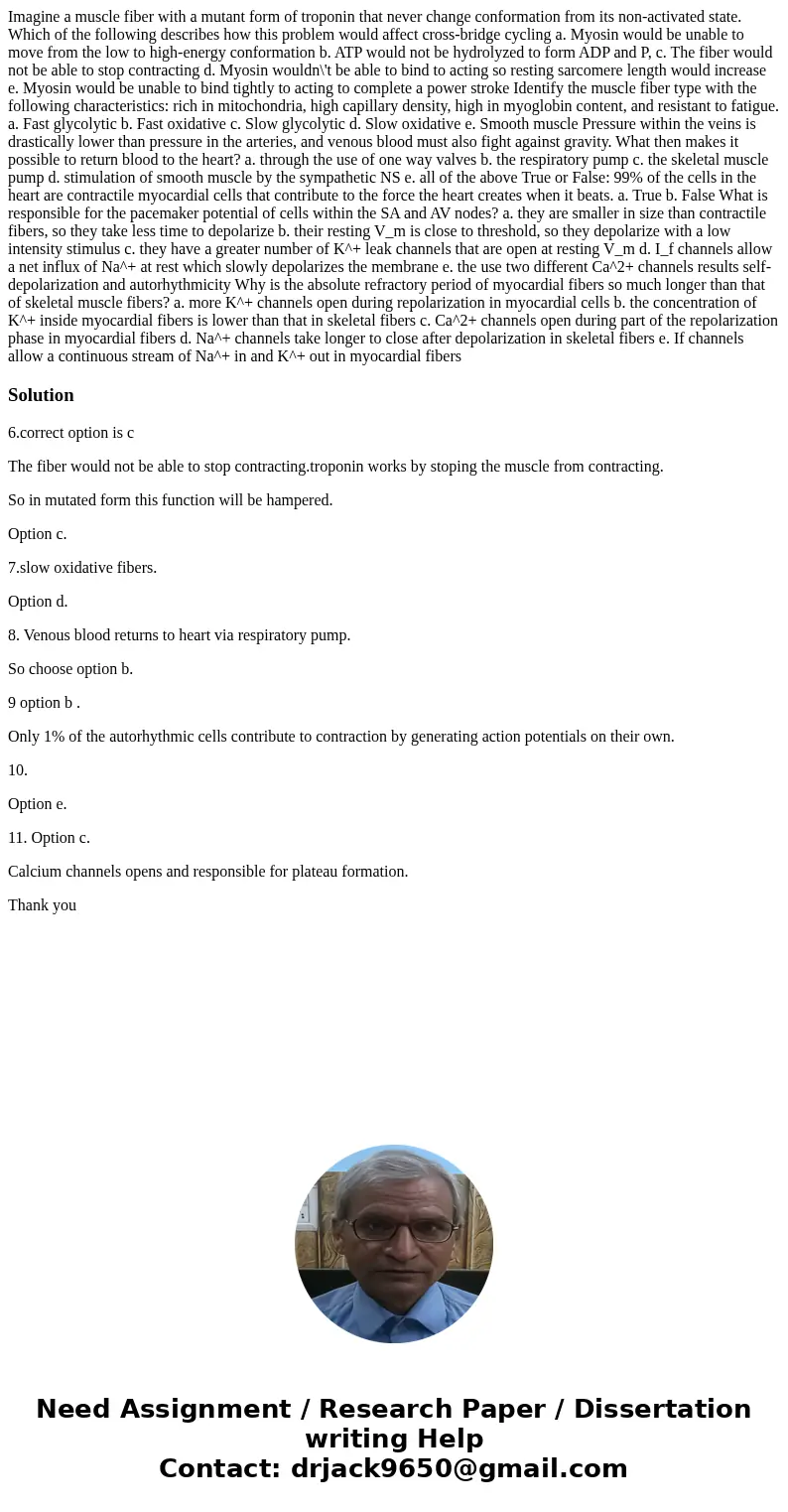Imagine a muscle fiber with a mutant form of troponin that n
Imagine a muscle fiber with a mutant form of troponin that never change conformation from its non-activated state. Which of the following describes how this problem would affect cross-bridge cycling a. Myosin would be unable to move from the low to high-energy conformation b. ATP would not be hydrolyzed to form ADP and P, c. The fiber would not be able to stop contracting d. Myosin wouldn\'t be able to bind to acting so resting sarcomere length would increase e. Myosin would be unable to bind tightly to acting to complete a power stroke Identify the muscle fiber type with the following characteristics: rich in mitochondria, high capillary density, high in myoglobin content, and resistant to fatigue. a. Fast glycolytic b. Fast oxidative c. Slow glycolytic d. Slow oxidative e. Smooth muscle Pressure within the veins is drastically lower than pressure in the arteries, and venous blood must also fight against gravity. What then makes it possible to return blood to the heart? a. through the use of one way valves b. the respiratory pump c. the skeletal muscle pump d. stimulation of smooth muscle by the sympathetic NS e. all of the above True or False: 99% of the cells in the heart are contractile myocardial cells that contribute to the force the heart creates when it beats. a. True b. False What is responsible for the pacemaker potential of cells within the SA and AV nodes? a. they are smaller in size than contractile fibers, so they take less time to depolarize b. their resting V_m is close to threshold, so they depolarize with a low intensity stimulus c. they have a greater number of K^+ leak channels that are open at resting V_m d. I_f channels allow a net influx of Na^+ at rest which slowly depolarizes the membrane e. the use two different Ca^2+ channels results self-depolarization and autorhythmicity Why is the absolute refractory period of myocardial fibers so much longer than that of skeletal muscle fibers? a. more K^+ channels open during repolarization in myocardial cells b. the concentration of K^+ inside myocardial fibers is lower than that in skeletal fibers c. Ca^2+ channels open during part of the repolarization phase in myocardial fibers d. Na^+ channels take longer to close after depolarization in skeletal fibers e. If channels allow a continuous stream of Na^+ in and K^+ out in myocardial fibers
Solution
6.correct option is c
The fiber would not be able to stop contracting.troponin works by stoping the muscle from contracting.
So in mutated form this function will be hampered.
Option c.
7.slow oxidative fibers.
Option d.
8. Venous blood returns to heart via respiratory pump.
So choose option b.
9 option b .
Only 1% of the autorhythmic cells contribute to contraction by generating action potentials on their own.
10.
Option e.
11. Option c.
Calcium channels opens and responsible for plateau formation.
Thank you

 Homework Sourse
Homework Sourse